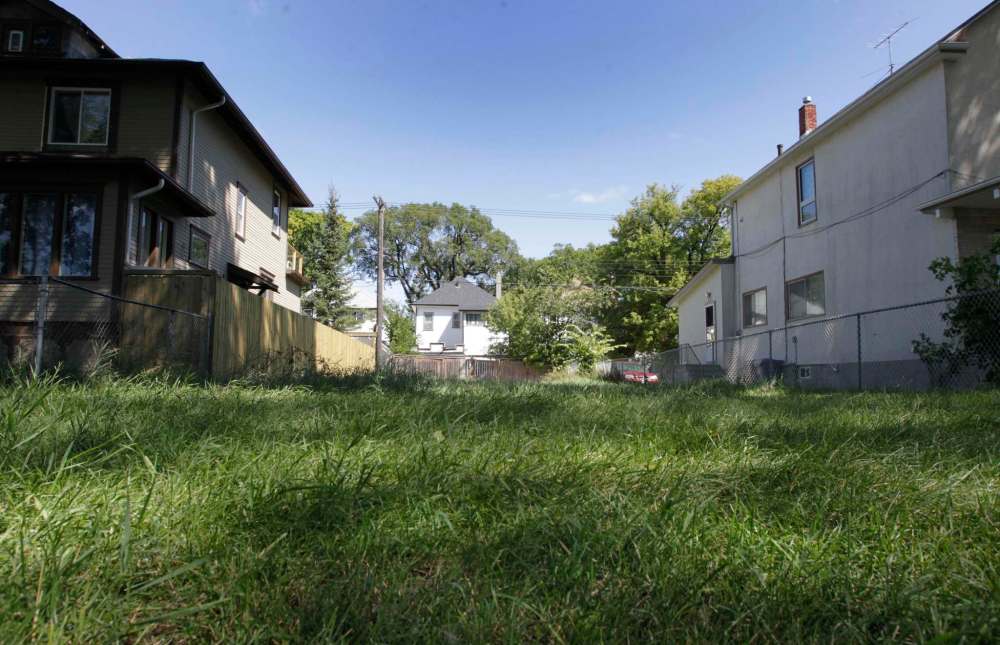City eyes cap on residential infill footprint
Advertisement
Read this article for free:
or
Already have an account? Log in here »
To continue reading, please subscribe:
Monthly Digital Subscription
$0 for the first 4 weeks*
- Enjoy unlimited reading on winnipegfreepress.com
- Read the E-Edition, our digital replica newspaper
- Access News Break, our award-winning app
- Play interactive puzzles
*No charge for 4 weeks then price increases to the regular rate of $19.00 plus GST every four weeks. Offer available to new and qualified returning subscribers only. Cancel any time.
Monthly Digital Subscription
$4.75/week*
- Enjoy unlimited reading on winnipegfreepress.com
- Read the E-Edition, our digital replica newspaper
- Access News Break, our award-winning app
- Play interactive puzzles
*Billed as $19 plus GST every four weeks. Cancel any time.
To continue reading, please subscribe:
Add Free Press access to your Brandon Sun subscription for only an additional
$1 for the first 4 weeks*
*Your next subscription payment will increase by $1.00 and you will be charged $16.99 plus GST for four weeks. After four weeks, your payment will increase to $23.99 plus GST every four weeks.
Read unlimited articles for free today:
or
Already have an account? Log in here »
Hey there, time traveller!
This article was published 03/01/2019 (2503 days ago), so information in it may no longer be current.
Two new houses on a single lot, taking up more space than the home that used to be there, may soon be a thing of the past in Winnipeg.
A city report being presented to the civic property and development, heritage and downtown development committee next week recommends councillors begin the approval process on a new residential infill strategy, beginning with revising the maximum lot coverage.
“This isn’t placing a moratorium here, but what it is trying to do is stop the idea of the wild west with infill development,” Coun. Brian Mayes, chairman of the civic property and development, heritage and downtown development committee, said Thursday.

“This was the No. 1 issue in my ward last year — finally surpassing gravel lanes… There has been a lot of infill in the northern part of my (St. Vital) ward. ‘Big, stucco, box’ is how a person summarized it. That’s the core of it,” he said.
“People don’t like two houses going in where one was before, but they really don’t like a wall 35-feet high near the property line and running very nearly to the back.”
Many older neighbourhoods have new development, either on vacant lots or by demolishing a smaller house and replacing it with a larger one or two structures. It has resulted in heated meetings at city hall, where residents have been pitted against developers or, at times, against neighbours.
The city report recommends the establishment of guidelines to restrict the amount of a lot taken over by a house and garage.
The report states civic staff have heard from Winnipeggers who say many infill housing buildings are “out of scale” and “skinny, tall and long houses,” resulting in a wall-like condition along the property line, with reduced side yards and buildings “maxing out” the lot.
The report says instead of allowing maximum lot coverage for infill housing to only include a house and then allowing for additional lot coverage for a detached garage or parking pad, the changes would see both the house, garage and parking pad included together for lot coverage in R-1 single-family home areas.
It would also prevent long infill that extends into the traditional backyard.
While Winnipeg has infill guidelines and policies in a few neighbourhood plans, other Canadian cities have lot coverage restrictions. Vancouver has set 45 per cent coverage including garages and parking, Calgary at 45 per cent coverage with house and garage combined (24 per cent if only a house alone), and Edmonton at 28 per cent for a house on the smallest lots and an additional 14 per cent for a garage for a total of 42 per cent.
Winnipeg already has a lot coverage limit for house construction in new developments which include the house and the garage.
Mayes said councillors would be looking at 45 per cent for infill lot coverage, instead of what currently can be higher than 60 per cent.
The civic report says if councillors approve the proposals, work could begin on drafting the amending bylaw, with a public hearing on it potentially being held by the end of the year.
kevin.rollason@freepress.mb.ca

Kevin Rollason is a general assignment reporter at the Free Press. He graduated from Western University with a Masters of Journalism in 1985 and worked at the Winnipeg Sun until 1988, when he joined the Free Press. He has served as the Free Press’s city hall and law courts reporter and has won several awards, including a National Newspaper Award. Read more about Kevin.
Every piece of reporting Kevin produces is reviewed by an editing team before it is posted online or published in print — part of the Free Press‘s tradition, since 1872, of producing reliable independent journalism. Read more about Free Press’s history and mandate, and learn how our newsroom operates.
Our newsroom depends on a growing audience of readers to power our journalism. If you are not a paid reader, please consider becoming a subscriber.
Our newsroom depends on its audience of readers to power our journalism. Thank you for your support.


